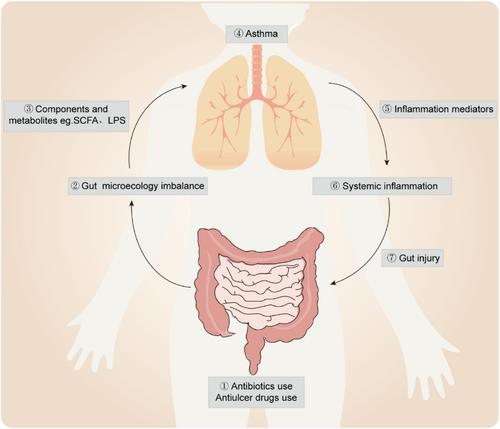Gut-lung axis and asthma: A historical review on mechanism and future perspective
Abstract
Background
Gut microbiota are closely related to the development and regulation of the host immune system by regulating the maturation of immune cells and the resistance to pathogens, which affects the host immunity. Early use of antibiotics disrupts the homeostasis of gut microbiota and increases the risk of asthma. Gut microbiota actively interact with the host immune system via the gut-lung axis, a bidirectional communication pathway between the gut and lung. The manipulation of gut microbiota through probiotics, helminth therapy, and fecal microbiota transplantation (FMT) to combat asthma has become a hot research topic.
Body
This review mainly describes the current immune pathogenesis of asthma, gut microbiota and the role of the gut-lung axis in asthma. Moreover, the potential of manipulating the gut microbiota and its metabolites as a treatment strategy for asthma has been discussed.
Conclusion
The gut-lung axis has a bidirectional effect on asthma. Gut microecology imbalance contributes to asthma through bacterial structural components and metabolites. Asthma, in turn, can also cause intestinal damage through inflammation throughout the body. The manipulation of gut microbiota through probiotics, helminth therapy, and FMT can inform the treatment strategies for asthma by regulating the maturation of immune cells and the resistance to pathogens.


 求助内容:
求助内容: 应助结果提醒方式:
应助结果提醒方式:


